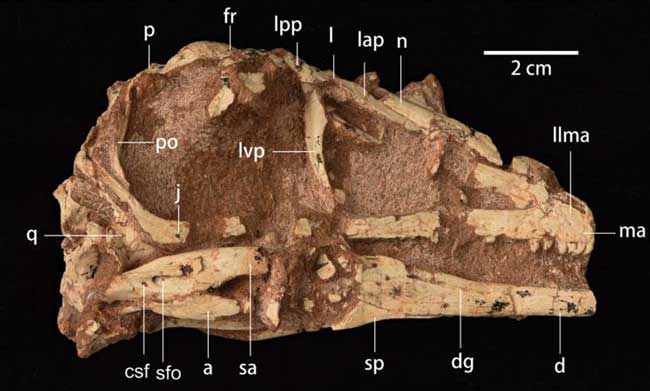A new species of short-snouted troodontid has been named and described based on fossils found in the Upper Cretaceous Wulansuhai Formation at Bayan Manduhu, Inner Mongolia. This little dinosaur has been named Papiliovenator neimengguensis.
Everything Dinosaur team members have been busy updating readers about new dinosaurs named and described this year (see below*), the formal scientific paper announcing this new troodontid was published earlier in the spring, but information about the fossils attributed as the holotype material had been circulating for some time.

Named From Strangely Shaped Dorsal Vertebrae
Known from a nearly complete skull and fragmentary, semi-articulated postcranial material thought to represent a single, individual animal, Papiliovenator means “butterfly hunter”. This little carnivore, which was less than a metre long, might well have hunted butterflies and other members of the Lepidoptera, but the derivation of the genus name does not reflect this dinosaur’s diet. Instead, it was the unusual shape of the neural arches associated with the two dorsal vertebrae closest to the neck of this dinosaur that inspired the genus name. When viewed from above (dorsal view), these neural arches are butterfly-shaped.

Unusual for a Late Cretaceous Troodontid
The researchers report that Papiliovenator was unusual among Late Cretaceous troodontids in having a fairly deep, short-snouted skull. This skull shape is seen in geologically older troodontids known from the Early Cretaceous. Most other Late Cretaceous troodontids have long, low snouts, except for the smaller Almas ukhaa from the Campanian-aged Djadochta Formation of Mongolia. Coincidently, Rui Pei of the Chinese Academy of Sciences was the lead author of the scientific paper naming and describing A. ukhaa (Pei et al, 2017). Rui Pei is the lead author of the paper describing Papiliovenator.
*To read about a new basal iguanodontian from southern China: Napaisaurus guangxiensis.
*A new alvarezsaurid taxon from Uzbekistan: Dzharaonyx eski Old Dzharakuduk Claw.
*A new therizinosaur from the Japanese island of Hokkaido: Paralitherizinosaurus japonicus.
The fossils are thought to represent a sub-adult animal. The discovery of Papiliovenator neimengguensis allows for an improved understanding of troodontid anatomy, as well as helping to highlight the regional variation of troodontids from the Upper Cretaceous of the Gobi Basin.
The scientific paper: “A new troodontid from the Upper Cretaceous Gobi Basin of inner Mongolia, China” by Rui Pei, Yuying Qin, Aishu Wen, Qi Zhao, Zhe Wang, Zhanmin Liu, Weilesi Guo, Po Liu, Weiming Ye, Lanyun Wang, Zhigang Yin, Ruiming Dai and Xing Xu published in Cretaceous Research.
Visit the Everything Dinosaur website: Everything Dinosaur.






Leave A Comment